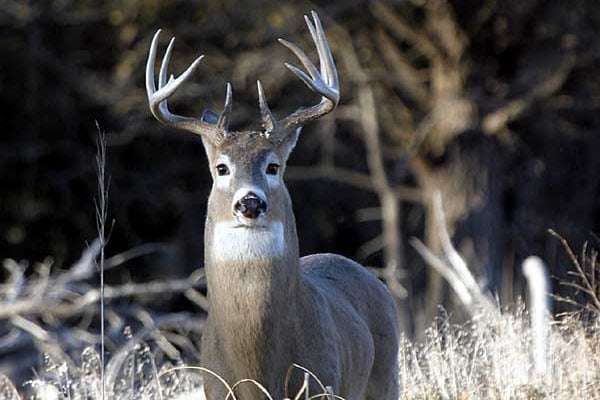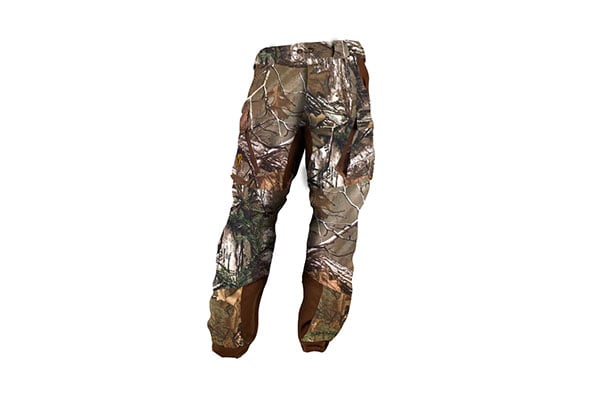
Last Updated on
Stalking is an important skill in any hunters arsenal, especially when they are hunting keen animals like whitetail. Deer have a superior sense of smell and razor sharp eyes (in some regards), and their hearing is just as good as ours. All this adds up to a formidable animal to try to sneak up on, and since deer live their lives paranoid and in a constant search for predators, every hunter really has their work cut out for them. However it is certainly not impossible, and every year many hunters accomplish successful stalks. Even if you’re not actively stalking deer, the practice makes a world of difference when you enter and exit whitetail territory. Let’s examine some of the basic principles of stalking whitetail.

Every Step Counts
Proper stalking begins with how you move through brush. Remember that deer have great eyesight and hearing. You’ll have to adjust the way you travel so you’re not a dead giveaway. First and foremost, act as if a deer is always nearby when you stalk. Chances are there might be, and when you’re out in the field you should always be on guard. Move slowly as you stalk and stop every few steps to listen and look around before proceeding. Watch where you place your feet, and avoid rustling leaves and breaking twigs. Just a single snapped twig or crushed leaf could be the only alert a deer needs.
Make use of optics like binoculars to scout as you stop every so often. If you don’t have hunting optics by now, it’s time to get some. An entry-level pair of hunting binoculars is more affordable than ever, and you’ll be surprised the amount of performance you’ll get for a reasonable investment. Try brands like Leupold, Hawke, Nikon and Vortex for great value in hunting binos. Opt for camo or natural colored binoculars and avoid any bright colors.

If it sounds excruciating to walk slowly through a forest full of dead leaves and fallen branches silently, that’s because it is. You’ll have to completely change the way you walk and constantly be on the lookout for silent or “less loud” places to step. Rocks, patches of live grass and other vegetation can be your “stepping stones” that help you avoid the louder elements as you travel. Don’t forget to use stealthy hunting clothing to minimize sound as well. Pants and jackets that swish and loud zippers have no place in your hunting apparel collection.

Your movement speed should be slow, and if it seems like you’re moving somewhat fast, then you are moving way too fast. Stalking is not a way to cover a ton of ground in a day. You shouldn’t use it to scout an area you’re unfamiliar with during hunting season. Rather it is only suitable for areas you’ve already scouted and picked out as potential sighting areas.
Even if you’re just traveling to your stand in the morning or evening, these principles still apply, albeit you may have to move a little faster to get to your stand on time. Even when it is dark, you still want to move carefully. The goal is to get to your stand and make it seem like nothing has been moving in the area.
Don’t Forget The Wind
Moving slowly and carefully isn’t going to do you a bit of good if the deer you’re stalking picks up your scent. Essentially you need to pay attention to the wind direction and make sure it isn’t blowing your scent towards the area(s) where you believe the deer are. If you have an area all scouted out but the wind isn’t cooperating, you’ll either have to approach it from a different angle or hunt a different area. Scent blocking devices and clothing certainly help, but even so don’t think you can beat a deer’s nose if the wind is carrying scent in their direction.

Utilize Brush And Cover
Stalking by moving slowly and carefully won’t do you a bit of good if you’re out in the open. You’ll have to use cover effectively, which means avoiding obvious mistakes like moving directly through an open field. Make every effort to stay close to cover so your silhouette doesn’t stick out like a sore thumb. Just make sure to balance the need for cover with the necessity of staying silent while moving.
If you encounter a wide open area to which there is no way around, you may consider speeding up your pace until you’re back in cover. It is a delicate balancing act. You don’t want to be caught out in the open too long, but you can’t move too fast and risk spooking the deer when you’re back in cover. Use your best judgment and never be in too much of a hurry.
Potential Encounters
If you do all these things right and the conditions are in your favor, you may be able to still hunt or stalk a deer. Even if you successfully stalk a deer, your shooting window is extremely narrow, potentially smaller than any other method of hunting. It goes without saying that you need to be ready. Don’t expect to stay undetected for long once you spot a deer. Have your arrow nocked or your firearm ready to shoot, and don’t wait too long. If you move too much closer, the deer is sure to spook and your shooting window will close in a couple seconds. Not every encounter ends in a shooting opportunity. Be patient and learn from early encounters so you can make the most of future opportunities.
Final Thoughts
Stalking techniques take time to develop, and more often than not it is trial and error experiences that teach you exactly what works and what doesn’t. The best beginners tip is to try stalking when you’re not deer hunting. You can do it either when you’re on a scout or try it when you’re hunting less important game. Get a feel for how it feels to stalk slowly, and get used to the rhythm. Remember that still hunting and stalking isn’t for everyone, and most hunters will find that it is a supplement to hunting from a stand each season. Be wise when you use this technique, after all you don’t want to spoil that early chance to ambush a big buck.
Image one courtesy of Wikimedia Commons.




Leave a Reply